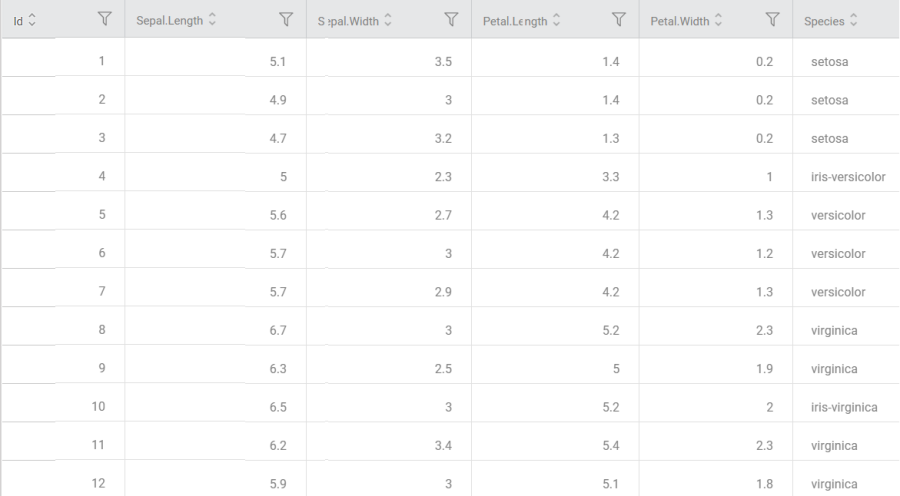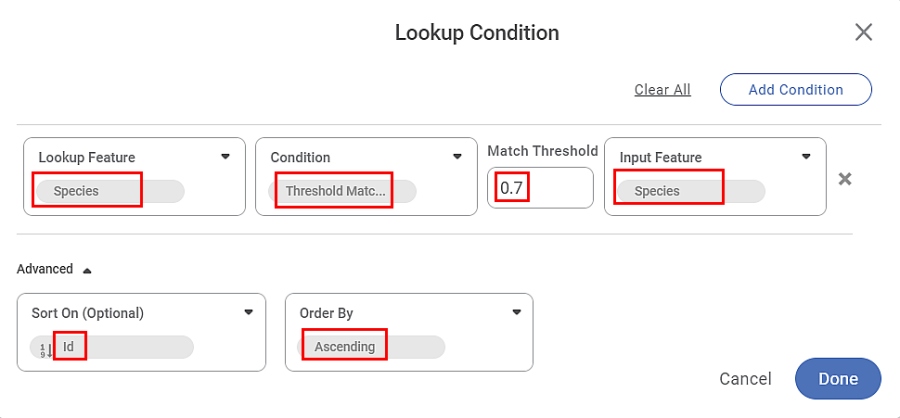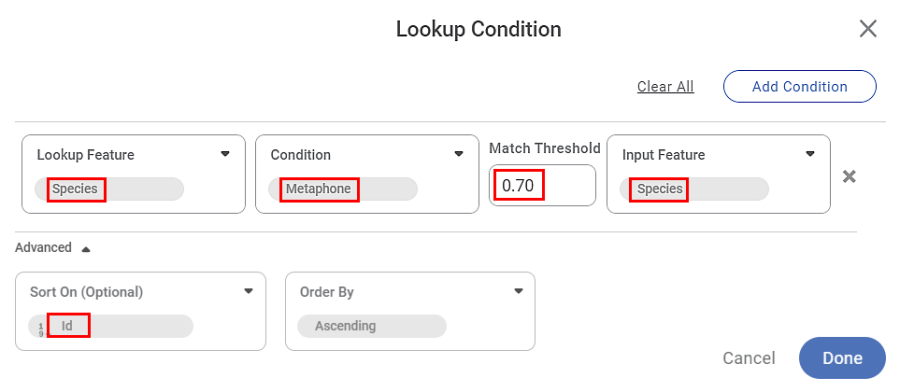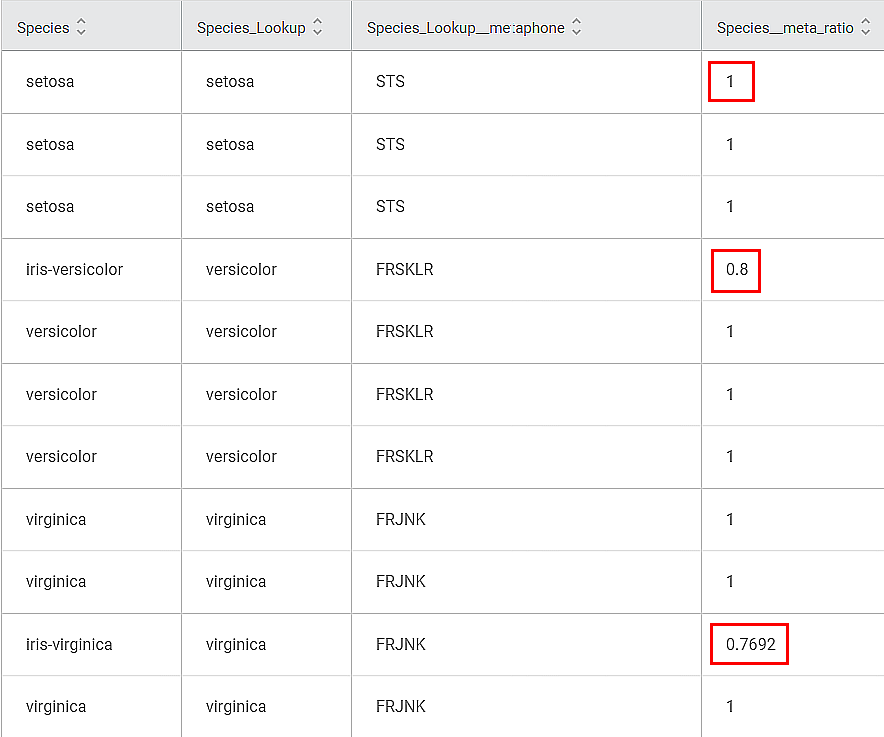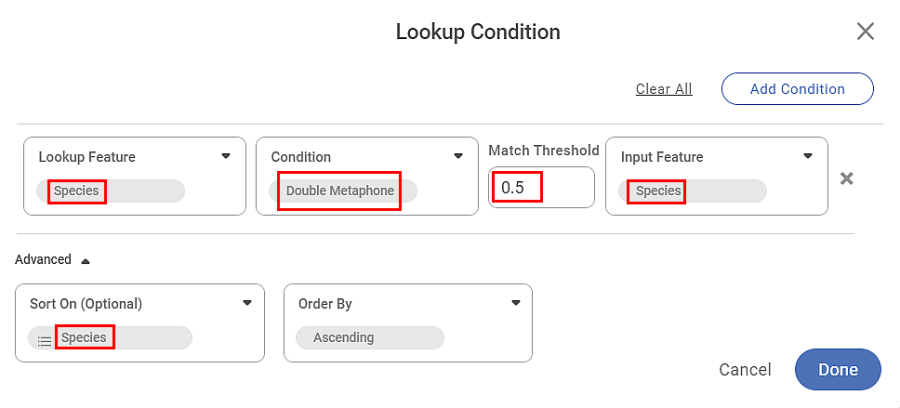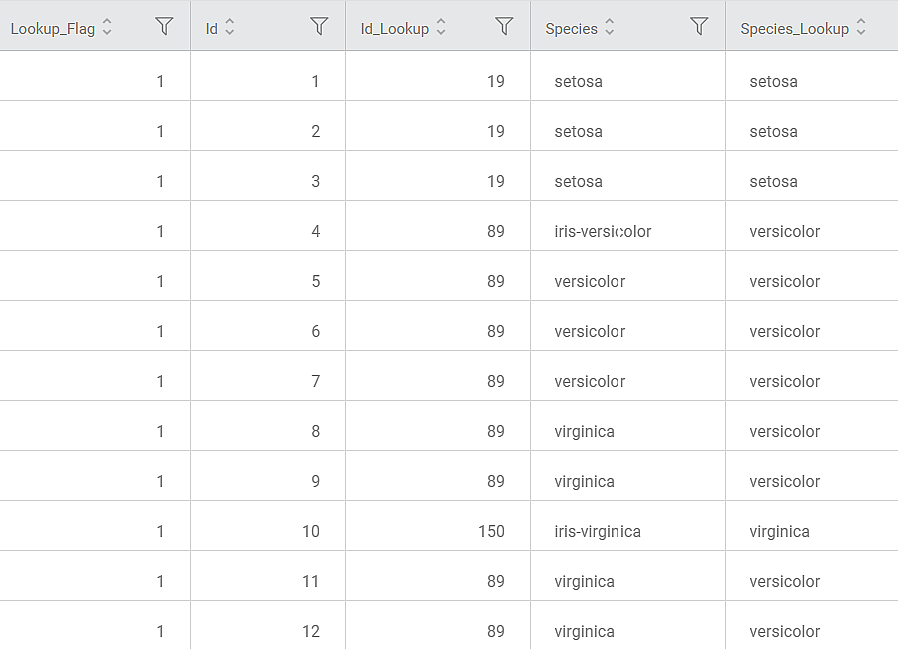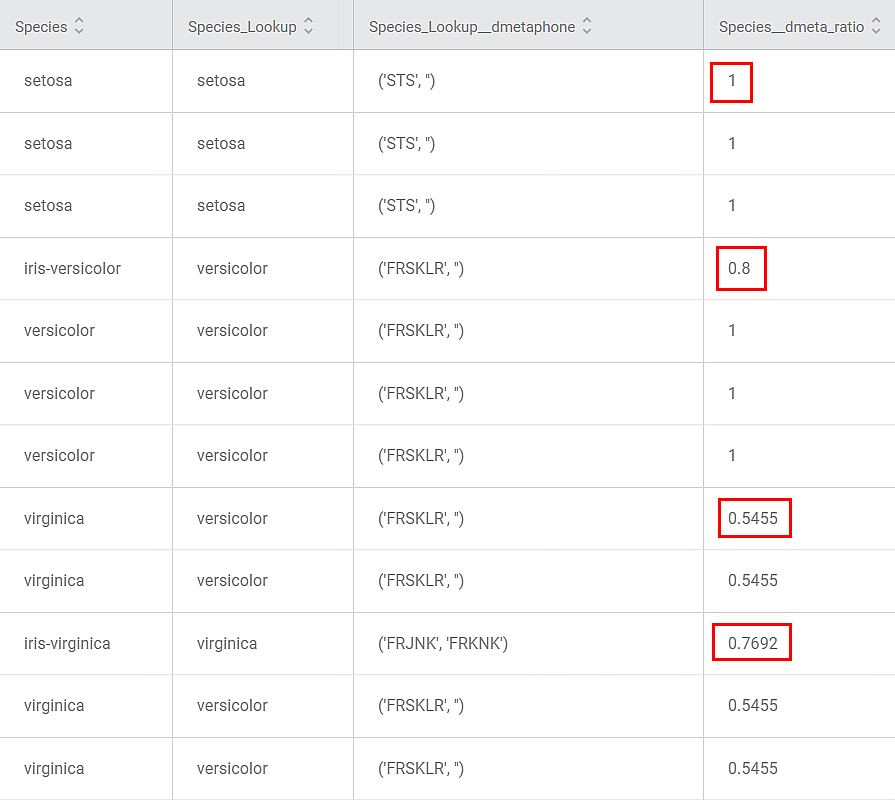Lookup for Categorical Variables
Methods
There are three methods for this feature:
Threshold Matching:
It compares the string values based on fuzzy logic and calculates a match score for each dataset row. Also, the user defines a match threshold value.
If the match score is more than or equal to the match threshold value, the two strings are said to be mapped; otherwise, they are not mapped.
For example, consider two records related to a customer's name, Stephan and Stefan. They repeatedly appear in customer data in multiple rows. The two names are similarly pronounced but have different spelling. You can compare the customer records for the two records using fuzzy logic. You can use the lookup functionality to map the two records.
Metaphone:
It generates a phonetic key for both the Lookup Feature (selected from the Lookup connection) and Input Feature (selected from the predecessor node to lookup) based on the pronunciation of the word/sentence. It then produces a match score to see whether the two strings match.
Double Metaphone:
It generates two phonetic keys for the Lookup Feature and Input Feature and then produces a match score.
Notes: |
|
Example of Fuzzy Logic using Threshold Matching
Consider the datasets IRISDatasetModified and IRIS_Dataset with ID, Species, Sepal Length, Sepal Width, Petal Length, and Petal Width columns. They are used for selecting the Input Feature and Lookup Feature, respectively. The input data is shown below.
The Lookup feature dataset is shown below.
We apply the following condition to implement the Threshold Match method of fuzzy lookup.
Property | Value |
Lookup Connection | IRIS_Dataset |
Lookup Features to Return | Id |
If non-matching records found? | Capture Non-Matching Records |
A snippet of the Lookup output data is displayed in the figure below.
- A Lookup_Flag value of 1 for all values indicates that for a Match Threshold of 0.7, all the three species values from input data are mapped. (for an unmapped value, the Lookup_Flag value is zero.)
- The Id_Lookup column shows those row IDs in the IRIS_Dataset whose species values are mapped with those from the IRISDatasetModified dataset. Each Id is mapped with the first value from the Lookup_Id whose match score is greater than the threshold.
| Ids | Mapped to Lookup_Id |
|---|---|
| 1, 2, and 3 | 1 |
| 4, 5, 6 and 7 | 51 |
| 8, 9, 10, 11, and 12 | 101 |
For the same pair of datasets, we use the Metaphone method.
For this, we apply the following condition.
The phonetic key created for
setosa – STS
versicolor – FRSKLR
virginica – FRJNK
All the three values, 1, 0.8, and 0.7692, are greater than the match threshold of 0.7. Hence, all the species values are mapped.
Example of Fuzzy Logic using Double Metaphone
For the same pair of datasets, we use the Double Metaphone method.
For this, we apply the following condition.
The double phonetic key created for
setosa – ('STS', ")
versicolor – ('FRSKLR', ")
iris-virginica – ('FRJNK', FRKNK ")
virginica – ('FRJNK', ")
All the four values, 1, 0.8, 0.5455, and 0.7692, are greater than the match threshold of 0.5. Hence, all the species values are mapped.
Related Articles
Lookup
Lookup Description Lookup helps you to match values of specified fields in two data sources. Why to use To compare values in data sources. When to use To determine the presence of a particular field from one data source in another data source. When ...Lookup
Lookup Description Lookup helps you to match values of specified fields in two data sources. Why to use To compare values in data sources. When to use To determine the presence of a particular field from one data source in another data source. When ...Categorical Naive Bayes
Categorical Naive Bayes Description The categorical Naïve Bayes algorithm is suitable for categorically discrete values like Weather Prediction, and Medical Diagnosis. It is the simplest and fastest classification algorithm. Why to use It is the ...Rubiscape Spring '23
New Features Studio Rubiscape Desktop All your favorite Rubiscape features, functions, and powerful dashboarding capabilities are now available in Rubiscape Desktop for Windows. With a completely new setup wizard, you can now customize your ...Rubiscape Autumn '21
New Features Platform & Studio Data Dictionary - Ability to create, edit, delete Data Dictionary JSON Dataset – Ability to create, edit, delete JSON file dataset Algorithms added: Count Vectorization TFIDF Algorithm SMOTE Algorithm – Detection and ...
